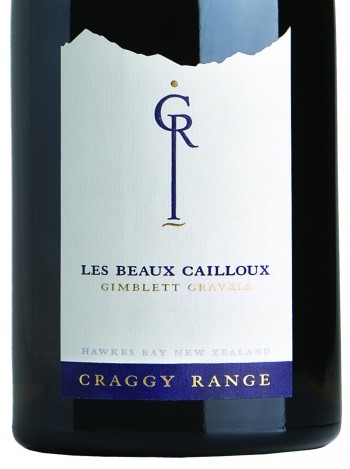New Zealand Chardonnay lovers have lost a fine wine with the demise of Craggy Range’s Les Beaux Cailloux vineyard.
After seemingly hitting its straps in the 2010 and 2011 vintage (93 points) with its best wines to date, the pesky mealybug put an end to the illustrious 10-year-old Chardonnay block in Hawke’s Bay’s Gimblett Gravels.
Following the 2011 harvest, out came the 8 hectares of vines at a cost of more than $1 million. But the potential costs were much higher: the leafroll virus had attacked the Beaux Cailloux vineyard, which represented 10 percent of its Gimblett Gravels vineyards. and it was starting to affect surrounding red blocks.“It was a tough call,” says winemaker Matt Stafford. “We sacrificed a $62 bottle of Chardonnay for a bottle of Sophia [their prestige Bordeaux blend, which retails for around $80].”
The block was left fallow for a couple of years to weed out the bug but Chardonnay has not gone back in the ground. Syrah has taken its place. Madness? Apparently not. Seeing the writing on the wall for the Beaux Cailloux block, Craggy had already planted a nearby vineyard with the same Chardonnay clone – 95 – on similar soil, which produced its first wine in 2010. The grapes are currently used to produce the winery’s Gimblett Gravels Chardonnay. They’re also replanting a block of Malbec with Chardonnay. So, Beaux Cailloux could be resurrected by 2017, if these vineyards prove their mettle, reveals Stafford. So, it’s not goodbye, it’s see you later.
But replacing the vineyard with Syrah? I recently blogged about the state of the New Zealand Syrah market. The variety is perhaps New Zealand’s most unique proposition, offering the drinker something no other wine region does – and let’s face it, there are plenty of fine Chardonnays to choose from around the world, but I wouldn’t fancy being the one trying to sell it. Stafford replies: “It is a tough sell but in the long term, we think Syrah is going to be greater for the Gimblett Gravels than Chardonnay.”
And what danger does leafroll hold for the Gimblett Gravels and beyond? “It is a problem but we been very proactive as has the Gimblett Gravels Winegrowers’ Association. New Zealand Winegrowers has also released a new app [in September] so viticulturists can go into the vineyards with their smartphones” Growers can learn about the virus and even take a photo of symptoms in your vineyard using the phone’s camera and send it to the Virus Elimination Project team for verification.
In the Gimblett Gravels, the paucity of soil is both a blessing and a curse for growers, notes Stafford. “The virus is spread by mealybugs. We’re trying to control that population and the difficult thing is the parasitic wasp is only attracted by flowering species and the land here is so poor. We are looking at how we can naturally find some hardy plants to create positive competition [with the vines] and attract the parasitic wasp.”
It’s an ongoing battle and we’ve lost a bloody nice Chardonnay vineyard and plenty of other decent blocks that were just starting to acquire some vine age. But New Zealanders are a hardy bunch and it’ll take more than a mealybug to stop them.

